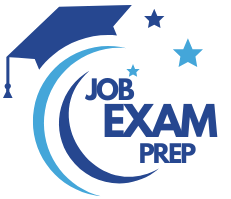| Question. 46 You have recently built a canvas app. When you ae informed that a user cannot discern the field that is currently in focus, you run App checker. You want to make sure that the value of the focused border thickness is more than zero. You examine the Accessibility results section of the App checker. Does the action achieve your objective? A. Yes, it does B. No, it does not |
46. Click here to View Answer
Answer:
A
Explanation:
The Accessibility checker classifies each issue as an error, a warning, or a tip based the issue’s severity.
Issues include:
✑ Focus isn’t showing
When the FocusBorderThickness of a control is set to 0. It is good practice to ensure a proper color-contrast ratio between the focus border and the control itself so it’s clearly visible.
We have 2 ways of troubleshooting here
1. Ask the user where is the field which they could not discern the focus and then change the FocusedBorderThickness, which is quite time-consuming
2. The second way is to check App checker > accessibility checker, there will be an error type named “Focus isn’t showing” and it would list all of the field with FocusedBorderThickness = 0.
Just go to these field and set the value higher than 0.
Reference:
https://docs.microsoft.com/en-us/powerapps/maker/canvas-apps/accessibility-checker
| Question. 47 You have recently built a canvas app. When you ae informed that a user cannot discern the field that is currently in focus, you run App checker. You want to make sure that the value of the focused border thickness is more than zero. You examine the Rules results section of the App checker. Does the action achieve your objective? A. Yes, it does B. No, it does not |
47. Click here to View Answer
Answer:
B
Explanation:
Correct answer is B:No, it does not.
Should be Accessibility results section instead of rules section
| Question. 48 You have recently built a canvas app. When you ae informed that a user cannot discern the field that is currently in focus, you run App checker. You want to make sure that the value of the focused border thickness is more than zero. You examine the Formulas results section of the App checker. Does the action achieve your objective? A. Yes, it does B. No, it does not |
48. Click here to View Answer
Answer:
B
Explanation:
NO ,it does not is right answer.
| Question. 49 You have recently built a canvas app. You are now required to share the app with your colleagues. Which of the following is TRUE with regards to sharing a canvas app? (Choose all that apply.) A. You can share the app with individual users. B. You can grant Co-owner permission to a security group if you created the app from within a solution C. The Co-owner permission is not available when sharing the app with individual users. D. You can share the app with a Microsoft Azure Active Directory security group. |
49. Click here to View Answer
Answer:
AD
Explanation:
After you build a canvas app that addresses a business need, specify which users in your organization can run the app and which can modify and even reshare it.
Specify each user by name, or specify a security group in Azure Active Directory
According to the Microsoft Learn article on sharing a canvas app with your organization, the following statements are true with regards to sharing a canvas app:
You can share the app with individual users.
You can share the app with a Microsoft Azure Active Directory security group.
The following statements are false:
You can grant Co-owner permission to a security group if you created the app from within a solution. This is only possible for model-driven apps, not canvas apps.
The Co-owner permission is not available when sharing the app with individual users. You can assign the Co-owner role to individual users if you want them to modify and re-share the app.
Reference:
https://learn.microsoft.com/en-us/power-apps/maker/canvas-apps/share-app-guests.
| Question. 50 Your company makes use of Microsoft 365, Microsoft Azure, and Power Platform for app development. Your company has a sister company that has the same Microsoft SharePoint and Azure configurations, but have their own tenant. You have been tasked with building a mobile app that must also be made available to the sister company. The sister company, however, must be prevented from making changes to any of the app components. You need to make sure that when detecting versions of the app solution, the following must be detected to prevent whichever inadvertent problems resulting from rolling back individual components to a previous version. All app components of the application must be provided to the sister company. Which of the following should be run before publishing the components for export? (Choose all that apply.) A. Portal Checker B. App checker C. Flow checker D. Object Detector |
50. Click here to View Answer
Answer:
BC
Explanation:
Scenario: When identifying versions of the app solution, all dependencies, entities, and user interfaces components must be identified to avoid any unintentional issues caused by reverting individual components to a previous version.
Power Apps has added components to the rule set that encourages best practices in the Power Apps Checker. You can check your canvas apps and flows that are included in solutions and then review all issues in a single, consolidated report.
